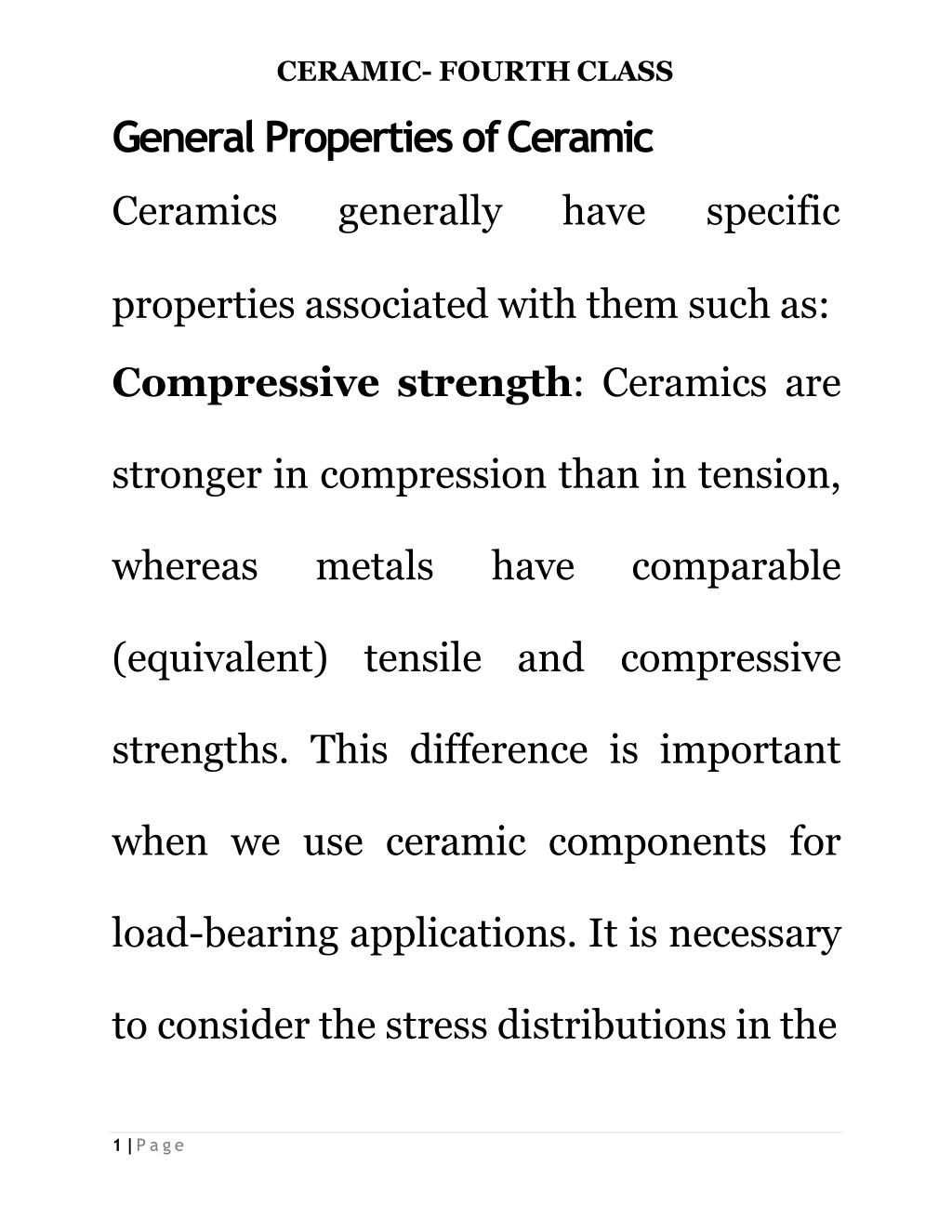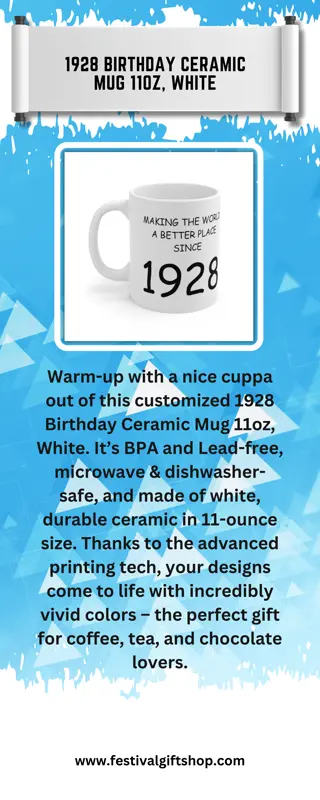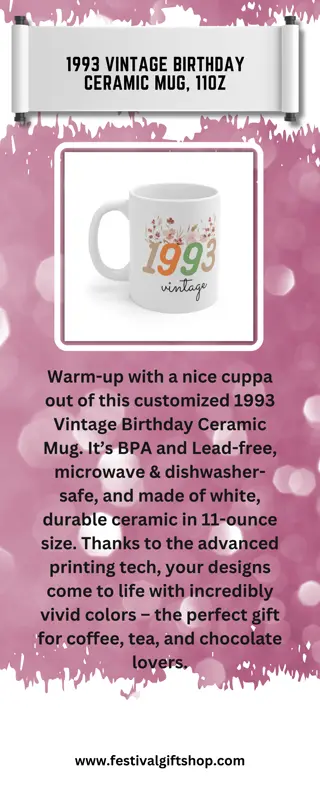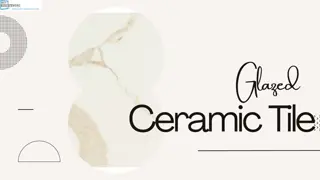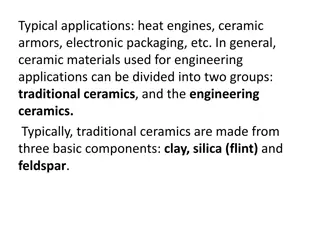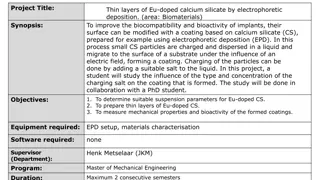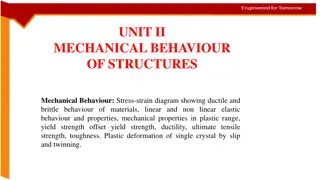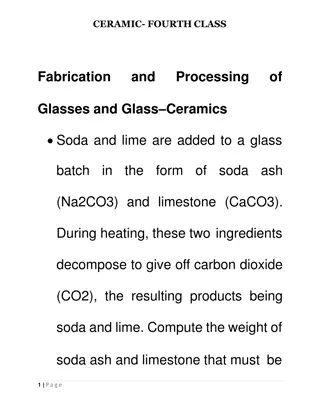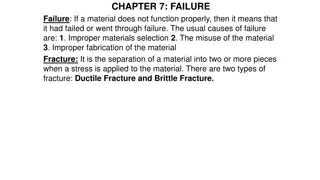Understanding Ceramic Properties: Strength, Brittle Behavior, and More
Ceramics exhibit specific properties such as high compressive strength, brittleness due to mixed ionic-covalent bonding, low fracture toughness, poor electrical and thermal conduction (except for some types), and chemical insensitivity. While strong in compression, ceramics are brittle and lack ductility, making them prone to fracture. Considerations for using ceramics in load-bearing applications, structural design, and high-temperature environments are crucial to optimize their performance.
Uploaded on Sep 29, 2024 | 0 Views
Download Presentation

Please find below an Image/Link to download the presentation.
The content on the website is provided AS IS for your information and personal use only. It may not be sold, licensed, or shared on other websites without obtaining consent from the author. Download presentation by click this link. If you encounter any issues during the download, it is possible that the publisher has removed the file from their server.
E N D
Presentation Transcript
CERAMIC- FOURTH CLASS General Properties ofCeramic Ceramics generally have specific properties associated with them such as: Compressive strength: Ceramics are stronger in compression than in tension, whereas metals have comparable (equivalent) tensile and compressive strengths. This difference is important when we use ceramic components for load-bearing applications. It is necessary to consider the stress distributions in the 1| P a g e
CERAMIC- FOURTH CLASS ceramic to ensure that they are compressive. An important example is in the design of concrete bridges the concrete, a CMC (ceramic matrix ceramic), must be kept in compression. Ceramics generally have low toughness, although combining them in composites can dramatically improve this property. Brittleness: This probably comes from personal experiences such as dropping a glass cup or a plate. The reason that the 2| P a g e
CERAMIC- FOURTH CLASS majority of ceramics are brittle is the mixed ionic covalent bonding that holds the constituent atoms together. At high temperatures (above the glass transition temperature) glass no longer behaves in a brittle manner; it behaves as a viscous liquid. That is why it is easy to form glass into complicated shapes. So, what we can say is that most ceramics are brittle at room temperature but not necessarily at elevated temperatures. The brittle 3| P a g e
CERAMIC- FOURTH CLASS behaviour of ceramics gives them low fracture toughness. Ceramic materials are relatively stiff and strong stiffness and strength are comparable (similar) to those of the metals. In addition, ceramics are typically very hard. On the other hand, they are extremely brittle (lack ductility) and are highly vulnerable to fracture. 4| P a g e
CERAMIC- FOURTH CLASS 5| P a g e
CERAMIC- FOURTH CLASS Poor electrical and thermal conduction except for Diamond and the oxide ceramic, ReO3. The valence electrons are tied up in bonds and are not free as they are in metals. In metals, it is the free electrons that determine many of their electrical and thermal properties. 6| P a g e
CERAMIC- FOURTH CLASS Chemical insensitivity: A large number of ceramics are stable in both harsh chemical and thermal environments. Pyrex glass is used widely in chemistry laboratories specifically 7| P a g e
CERAMIC- FOURTH CLASS because it is resistant to many corrosive chemicals,stableathightemperatures(it does not soften until 1100 K), and is resistant to thermal shock because of its low coefficient of thermal expansion (33 10 7 K 1). It is also widely used in bakeware. 8| P a g e
CERAMIC- FOURTH CLASS So, they are more resistant to high temperatures and harsh environments than metals and polymers. Transparency: Many ceramics such as precious stones and optical fibres are 9| P a g e
CERAMIC- FOURTH CLASS transparent. Metals are transparent to visible light only when they are verythin, typically less than 0.1 m. Although it is always possible to find at least one ceramic that shows a typical behaviour, the properties we have mentioned here are in many cases different from those shown by metals and polymers. 10| P a g e
CERAMIC- FOURTH CLASS Fabrication Ceramics and Processing of One chief concern in the application of ceramic materials is the method of fabrication. Many of the metal-forming operations rely on casting and/or techniques that involve some form of plastic deformation. Since ceramic materials have relatively high melting temperatures, casting them is normally impractical. Furthermore, in most 11| P a g e
CERAMIC- FOURTH CLASS instances the brittleness of these materials prevents (prohibits) deformation. Some ceramic pieces are formed from powders (or particulate collections) that must ultimately bedried and fired. Glass shapes are formed at elevated temperatures from a fluid mass that becomes very viscous upon cooling. A scheme for the several types of ceramic-forming techniques is presented in Figure 1: 12| P a g e
CERAMIC- FOURTH CLASS scheme for ceramic Figure 1: A classification forming techniques. 13| P a g e
